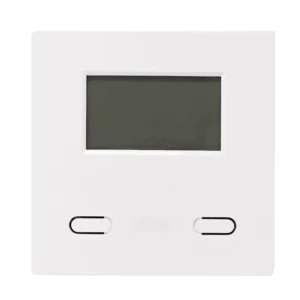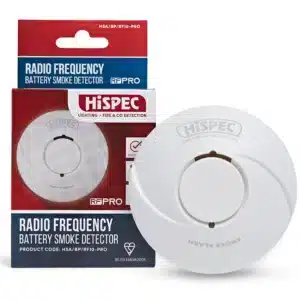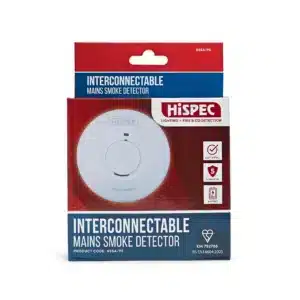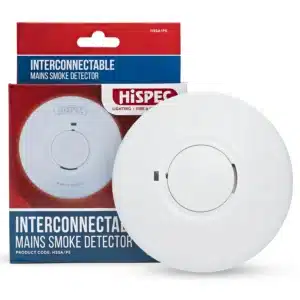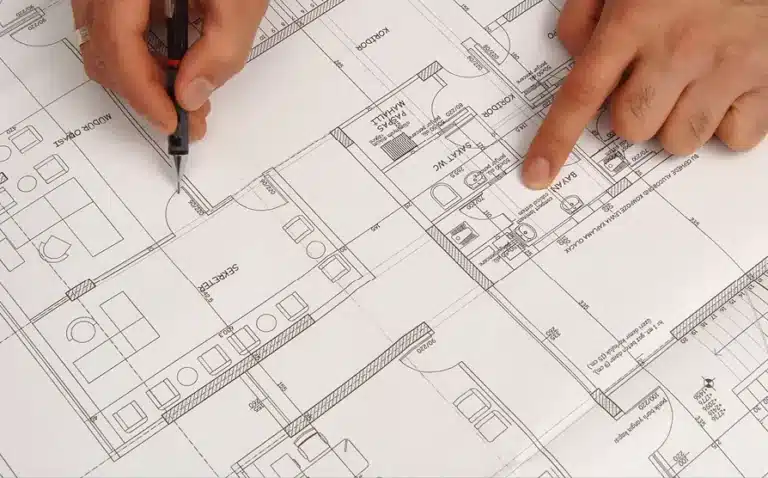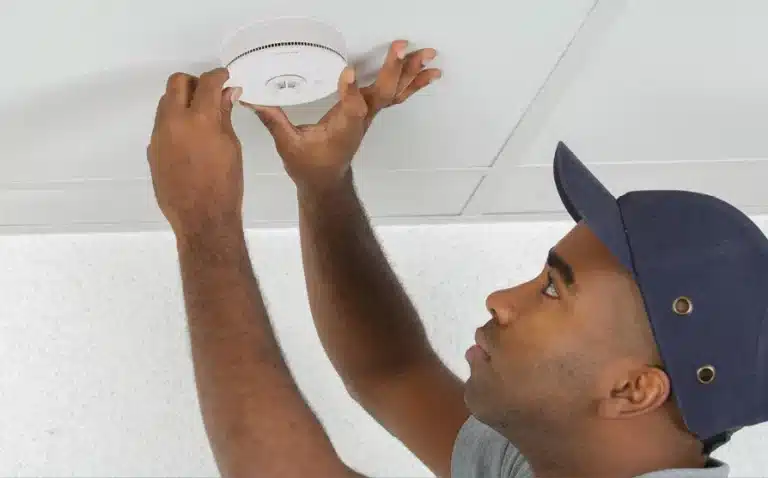A smoke alarm is the first line of defence against a fire in any type of property as it will alert you of any smoke in your building or home. Understanding the correct way to install, maintain and test a smoke alarm is important to ensure a safe space.
Through this blog, we will give you the tools to know how to install a battery operated smoke alarm correctly and efficiently to ensure maximum safety. However, if you’re wanting to install an alarm which is connected to the mains electricity, we would always recommend using a qualified electrician so you have peace of mind that it is installed correctly.
Step-by-step guide to installing a battery-powered smoke alarm
For the installation of a smoke alarm, the below materials and tools will be required:
- Tape measure
- Pipe, cable and stud detector
- Power drill and appropriate drill bits
- Screwdriver
- Ladder or Access Platform
- Smoke alarm
- Hammer
Step 1: Choose a suitable location to site your smoke alarm avoiding any dead air space and obstructions, keeping 300mm from any room corners.
Step 2: Remove the alarm and mounting plate from all packaging.
Step 3: Check your chosen area of the smoke alarm for pipes and cables using an electronics detector.
Step 4: Hold the base plate to the chosen location and use the fixing slots as a guide to mark out the position on the ceiling of where to screw the holes.
Step 5: Using an electric drill, drill holes into each of the locations marked previously.
Step 6: Insert the wall plugs by pushing firmly in with your finger and lightly tapping with a hammer until flush.
Step 7: Using screws provided with the smoke alarm, fit the base plate to the ceiling with a screwdriver.
Step 8: If the alarm does not have a factory fitted sealed battery, the supplied battery should now be installed.
Step 9: Fit the alarm to the base plate by placing it on, then twist it clockwise until the alarm is locked into the correct position.
Step 10: Finally, press the test button for 3 seconds on the smoke alarm, you will hear a beep and see a red light on the front of the alarm that indicates the alarm has been installed successfully.
If you have multiple interlinked alarms within the system, press and hold the test button for 20 seconds and all alarms within the system should now sound. Repeat this process with all alarms.
Maintaining your smoke alarm: tips for longevity and efficiency
The correct maintenance of a smoke alarm is crucial in ensuring it will deliver you the highest level of safety.
Firstly, keeping the alarm clear of dust and dirt is important as this can cause false alarms, which are highly inconvenient in the middle of the night. The easiest way to clean your alarm is to take a damp cloth, or the soft brush head attachment on a vacuum, and clean the vents and sensor.
In terms of battery life, alarms with replaceable batteries must have their batteries replaced periodically, ideally every 12-18 months or as soon as the alarm emits a beeping sound once per minute. Finally, if you’re decorating or materially altering your property, remove the alarm from the mounting base and store in a clean cupboard/drawer well away from the building work to avoid a build up of dust and contamination. Painting the alarm will be detrimental to its fire detection capabilities.
How to test your smoke alarm regularly and why it’s crucial
Testing a smoke alarm to see if it is working only takes a few seconds but can directly impact the speed at which people are alerted to a fire, meaning it is non-negotiable.
Testing smoke alarms once a month, at least, will help make sure the smoke sensor and batteries are working effectively. Simply press and hold the test button on the alarm until the alarm sounds; it will stop alerting when the button is released.
The importance of having a working smoke alarm shouldn’t ever be underestimated. If you’re ever in doubt about whether your alarm is working effectively, speak to an electrician in your local area for guidance.
If you are unsure about any steps in this guide, you should consult a competent trades person prior to starting any work.



